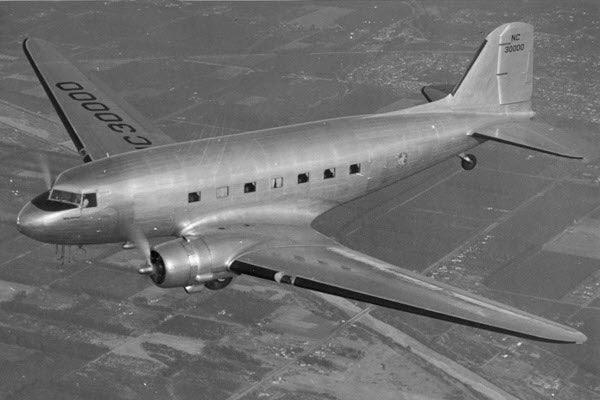The "Samoan Clipper"
It's 11 January 1938 when Captain Musick starts Pan American Airways’ Sikorsky S-42B, NC16734, and taxies the aircraft into the bay at Pago Pago, American Samoa.
The crew of seven prepares the aircraft for takeoff and the captain maneuvers the aircraft into the wind.
After carefully checking the wind and water conditions, the captain begins to advance the engine power levers and begins his water takeoff.
Soon NC16734 is airborne winging its way to Auckland, New Zealand.
This aircraft is known affectionately as the "Samoan Clipper," carrying on Pan American Airways' tradition of naming each of their aircraft.
This tradition will continue throughout the storied history of this great airline.
This aircraft made the first airmail flight from New Zealand to Hawaii in early January 1938, arriving in Honolulu on January 3, 1938. Six days later, on January 9, 1938, the aircraft departed Honolulu for Kingman Reef and then on to Pago Pago.
The aircraft safely arrived in Pago Pago, American Samoa.
But, this was not the end of the story about this aircraft.
The Sikorsky S-42B Aircraft
The Sikorsky S-42 design incorporated several important technological innovations, such as using the new duraluminum, which allowed the new aircraft to lift more fuel, passengers, and cargo.
The aircraft wing loading was a remarkable 28.6 pounds per square foot, similar to a high-performance racing aircraft. It was more than twice the wing loading of the Ford Trimotor, the most popular airline aircraft of the time.
Other new innovations included hydraulic wing flaps to lower takeoff and landing speeds and variable pitch propellers, which provide fuel efficiency during crew and more power during takeoff.
The first flight of an S-42 took place on April 26, 1934, carrying eight tons of payload to a height of 16,000 feet.
Pan American's CEO, Juan Trippe, had approached both Sikorsky and Glenn Martin of Martin Aircraft to design and build Pan Ams' next airliner. To make sure he got the best aircraft, Trippe ordered three aircraft from both companies.
Sidenote:
( I met Juan Trippe once when I flew a Michigan State University Flying Club Cessna 172 with four on board from Lansing, Michigan, to Eleuthera island in the Bahamas. He invited us to have dinner with his family on the beach that evening.)
Continued from the sidenote...
On August 1, 1934, Pan Am had its chief pilot, Edwin Musick, its technical advisor Charles Lindbergh, and Sikorsky's test pilot Boris Sergievsky conduct a test flight of the new aircraft carrying the equivalent of 32 passengers, a crew of five, and one ton of mail and cargo.
The plane was flown over a 1,242-mile course, averaged 157.5 mph, and set a total of eight world records for speed, payload, and altitude.
On August 16, 1934, the S-42 was placed into service flying Pan Am's Latin American routes out of Miami.
S-42B Technical Details
Here is the aircraft's datasheet: - Fuselage Length: 69′
- Wingspan: 118′ 2″
- Max Gross Takeoff Weight: 42,000 lbs
- Engines: Four Pratt & Whitney Hornet radial engines 750 hp
- Propellers: Hamilton-Standard 3-blade variable pitch
- Max Speed: 190 MPH
- Cruising Speed: 150-160 MPH
- Fuel capacity: 1.240 gallons
- Crew: 5 (2 pilots, engineer, radio operator, and steward)
- Normal cruising range: 1,200 miles
- Max cruising range: 3,000 miles, stripped and equipped with cabin fuel tanks

The S-42 was an incredible improvement in aircraft, and below is a cut-out image of what the aircraft looked like inside:

Danger Lies Ahead
On an earlier flight (Date Unknown), the number four engine had begun to seriously overheat, so Captain Musick ordered the flight engineer to shut that engine down and feather the propeller.
Feathering the propeller was necessary to reduce drag and help the aircraft maintain flight. When you feather a propeller, the blades are turned perpendicular to the wind exposing the thin side of the blade to the wind.
Next, Captain Musick ordered the crew to begin dumping fuel to lower the weight of the aircraft for landing.
The fuel dumping characteristics of the aircraft had been tested earlier by using dye. They had learned that the fluid tended to accumulate at the trailing edge of the wing and that that fuel could actually be sucked back into the wing itself.
As the fuel was being dumped on this earlier flight, fuel vapors could be smelled in the cabin, and, as a safety precaution, all electrical systems were turned off - even though it was at night. Fuel was also dripping into the cockpit from the wing above.
The aircraft landed safely in Pago Pago. I could not locate any records indicating what, if any, actions were taken on the aircraft.
On January 11, 1938, the aircraft was refueled and took off for Auckland, New Zealand, with a crew of seven and a cargo of mail..
Disaster
Approximately one hour after takeoff, the radio operator radioed Pago Pago that one of the engines was leaking oil, and the crew was returning to Pago Pago.
They were never heard from again!
A U.S. Navy seaplane tender, the USS Avocet (AVP-4), found the wreckage, a large oil slick, documents, and the crew's clothing.
It was apparent that the aircraft had exploded in midair.
Accident Report
| Date: | Tuesday 11 January 1938 |
| Type: | Sikorsky S-42B |
| Operator: | Pan American Airways (Pan Am) |
| Registration: | NC16734 |
| MSN: | 4207 |
| First flight: | |
| Crew: | Fatalities: 7 / Occupants: 7 |
| Passengers: | Fatalities: 0 / Occupants: 0 |
| Total: | Fatalities: 7 / Occupants: 7 |
| Aircraft damage: | Damaged beyond repair |
| Location: | 120 km (75 mls) S off Pago Pago, American Samoa ( Pacific Ocean) Pacific Ocean) |
| Phase: | En route (ENR) |
| Nature: | Cargo |
| Departure airport: | Pago Pago International Airport (PPG/NSTU), American Samoa |
| Auckland International Airport (AKL/NZAA), New Zealand |
Narrative:
A Sikorsky S-42B, named "Samoan Clipper" and registered NC16734, made the first airmail flight from New Zealand to Hawaii in January 1938.
The flying boat and its mail arrived in Honolulu on January 3, 1938, and just six days later, it departed again for a return flight to Kingman Reef, Pago Pago, and Auckland.
About an hour after departing Pago Pago in the early morning hours of January 11, NC16734 suffered an oil leak, and the crew decided to return to Pago Pago.
Fully loaded with fuel for the long flight to Auckland, the ship was too heavy to land safely in Pago Pago's small harbor, and captain Musick decided to dump fuel to lighten the aircraft for landing.
At some point during the fuel dumping operation, the gasoline ignited, and the Samoan Clipper was destroyed by an explosion, killing all seven on board.
A sad ending to a beautiful aircraft and its crew.
Captain Musick

Until next time, keep your eyes safe and focused on what's ahead of you Hersch!



ps: Please share "The "Samoan Clipper" with your friends on Facebook and Twitter.




Leave a comment
This site is protected by hCaptcha and the hCaptcha Privacy Policy and Terms of Service apply.